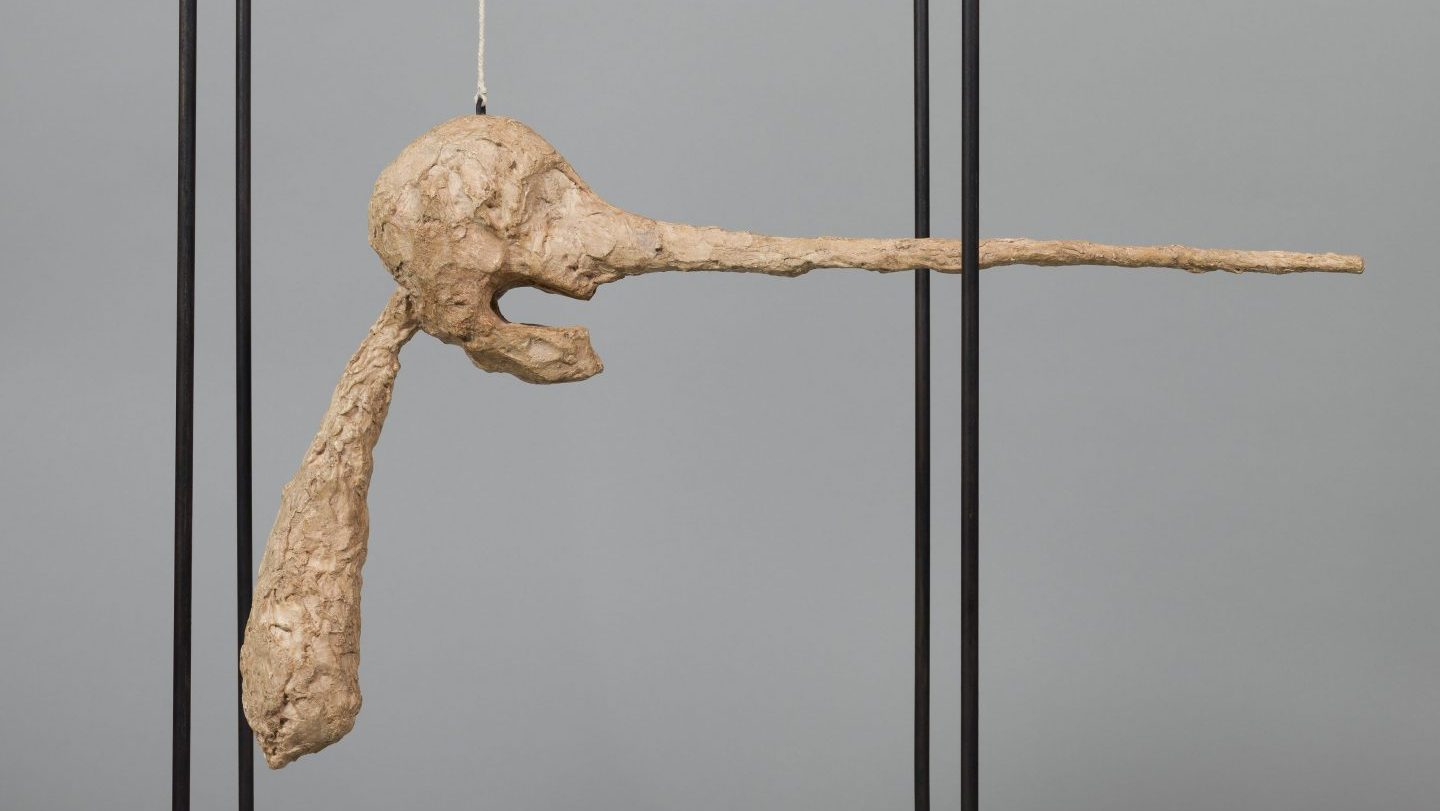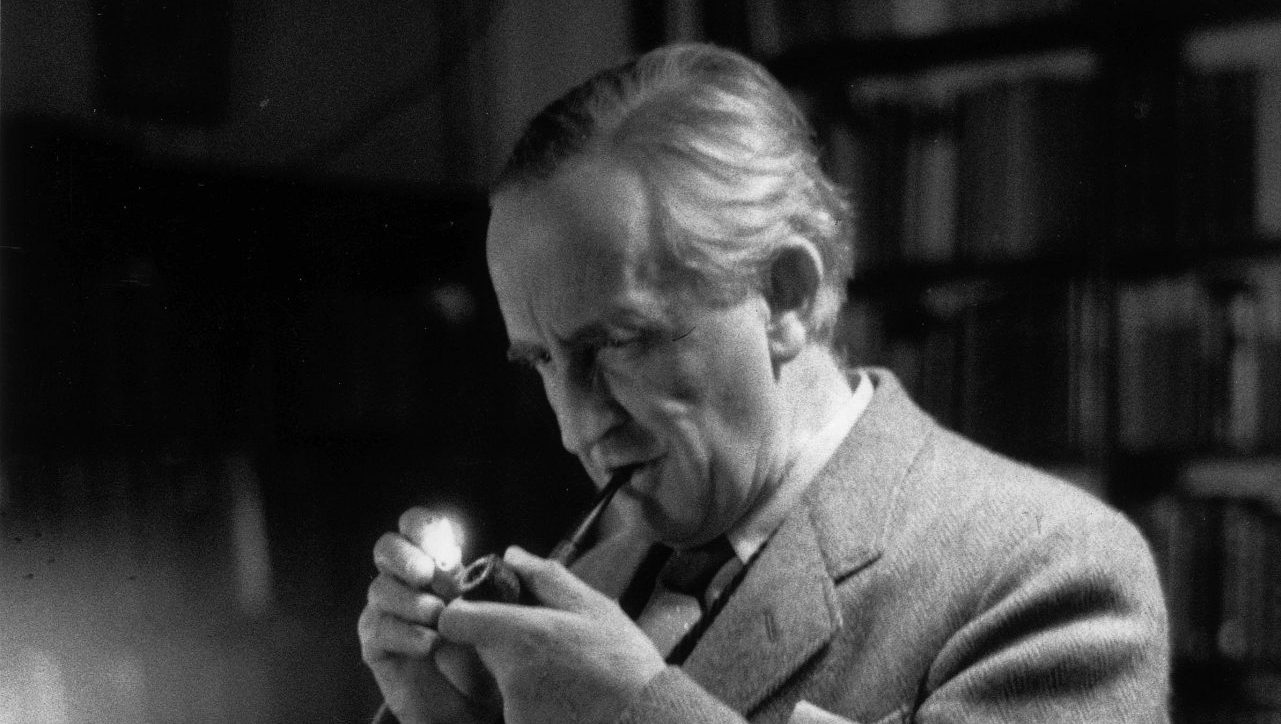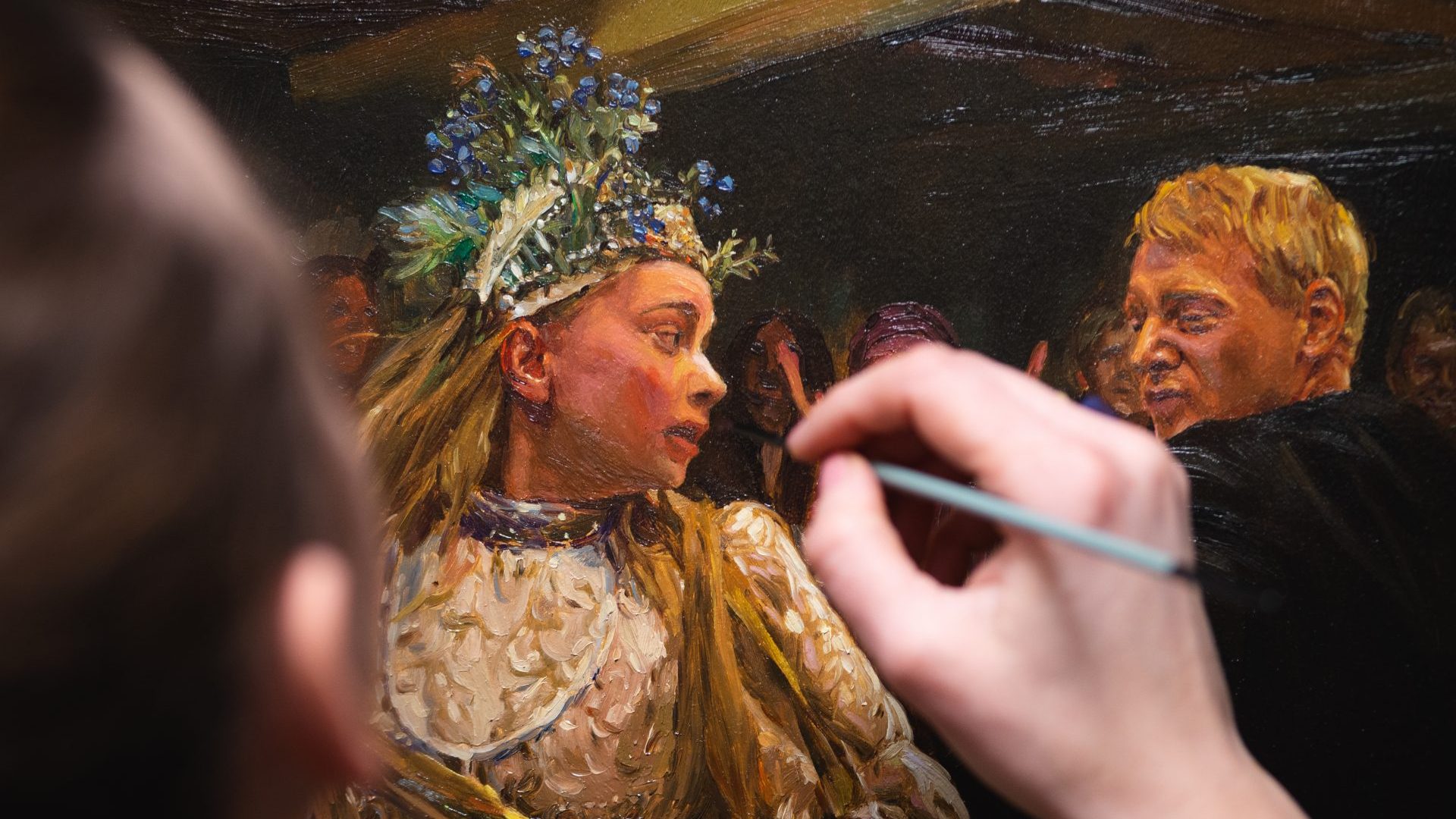In 1946, the Swiss-born sculptor, painter and draughtsman Alberto Giacometti returned to Paris from Geneva after a wartime absence of five years. In his small studio in Montparnasse, he began to write a personal reminiscence: “The nose became more and more prominent, the cheeks grew hollow, the almost motionless mouth barely breathed”.
The description was part of Giacometti’s essay The Dream, the Sphinx and the Death of T, published in the surrealist magazine Labrynthe no 22-23, (December 1946). It was a raw memory of the time when, at the age of 20, he witnessed the death of a travelling companion, Mr Van Meurs during an impromptu visit to the Italian Alps in September 1921.
At the time, in a letter to his parents, Giacometti described the horror of what occurred. He had found Van Meurs, a Dutch librarian, on the floor, his eyes wide open. “I am still full of terror and astonishment, I feel lost. Fate can be so inexplicable and terrible… Mr Van Meurs died in the presence of me and a chambermaid. It’s appalling. It seems incomprehensible…”
The shock indelibly remained with Giacometti, affecting his work. After the death of van Meurs, Giacometti travelled through Italy, drinking heavily and frequenting brothels. In 1946 his macabre text re-examined the experience in order to recognise the motivations – conscious or unconscious – that moulded his art. It revealed a fear of death and encapsulated the sculpture Giacometti was about to create.
The result was an image of death, Le Nez (The Nose, 1947) a roughly sculpted head with an elongated nose emerging from sunken cheeks in a hollow-eyed bony face. It is a grotesque figure and a recurrent, often paradoxical theme in Giacometti’s art. The skull-head’s gaping, toothless mouth is caught in a moment, open-wide, transfixed as if barely able to breathe. It is an iconic sculpture from an already impressive oeuvre.
The ambiguity of Le Nez provokes curiosity, fascination, repulsion and resistance from the viewer. It disturbs. It has no charm, yet draws viewers in through pathos.
To exhibit the work, Giacometti suspended the head, held by a rope tied to the top of a metal cage. The long nose protruded through the invisible wall of the metal frame. His method of display allowed a 360-degree presentation, to inspect the head and its long, beribboned nose.
There are many interpretations of its meaning. Are we witness to a dark memory, a sexual desire or a surrealist Pinocchio? And what is the body-mass beneath the head? Is the whole work a pointed gun? Seventy-five years after its creation, curator and art specialist Agnès de la Baumelle says in the catalogue of a new exhibition centred around Le Nez, that it remains “a solitary, extraordinary masterpiece… one of the most moving of the post-war period”.
Le Nez was drawn in pencil in Giacometti’s notebook as an anamorphic view and a profile during 1946-1947. It was first modelled in plaster in 1947 and then reworked by him over the next 17 years, a significant work perpetually in motion, as he saw it. In all, five versions were created, varying in size and materials.
They are now on display in a rare showing brought together in the exhibition Alberto Giacometti: Le Nez, at the Institut Giacometti in Paris. One version, too fragile to move, is represented in a holograph. The curator of the exhibition, Hugo Daniel, has chosen sculptures, drawings and Fondation Giacometti archive material relevant to the creation of Le Nez, as well as interpretations by four contemporary artists, Annette Messager, Rui Chafes, Hiroshi Sugimoto and Ange Leccia. Daniel describes the original sculpture as being “like a breach in life”.
The exhibition reveals connections between Giacometti’s earlier and later works. Many of his sculptures are based on memories, including of his upbringing and place of birth.
He was born in the mountain village of Bogonovo, near Stampa, in the Swiss Alps, close to the Italian border, and grew up with his parents and two younger brothers; Diego, a sculptor and designer who became an assistant to Alberto; Bruno, an architect; and a sister, Ottilia. Their father Giovanni Giacometti was a successful post-impressionist painter. He and his wife, Annetta Stampa, encouraged their four children to draw and paint.
Early references to the nose are found in the Engadine Fables, illustrated by Giovanni Giacometti, creating a mythological archetype for Alberto’s later work. Early watercolours by Alberto are informed by his father’s drawings and paintings, not copied but improvised and inspired by them. At 12, he created his first painting in oils; his first sculpture – of Diego – at age 12.
In 1922, Alberto Giacometti left Stampa and moved to Paris, studying under the sculptor Antoine Bourdelle, absorbing the fast-changing culture of avant-garde art movements. He was interested in Egyptian and African art, particularly heads and masks. Scale and perspective were key elements of his work.
Giacometti’s art attracted attention, gaining public recognition as he adopted a surrealist language, fusing conscious and unconscious experiences emerging from his association with the Surrealist group in Paris, led by André Breton. The French psychoanalyst Jacques Lacan, an interpreter of Sigmund Freud’s work, became a friend of Giacometti. The influence of Lacan’s theories about the unconscious scopic drive – the pleasure derived when your gaze lights upon and circles an object – can be recognised in Giacometti’s Suspended Ball (1930-31), and Point to the Eye (1931), informed by Dalí’s painting The Enigma of William Tell. It is present in Le Nez through the point of the nose – a sexual, erotic drive.
Pre-war objects and drawings show that the death of Giacometti’s father in 1933 had a dramatic effect. It had brought back recollections of the death he witnessed in 1921, and conscious or unconsciously motivated him. Tete/Head (1935), pre-empts Le Nez, and its facial features were later recognised in Head on a Rod, 1947.
Le Cube, (1934-35), an abstract 12-sided polyhedron in bronze, links to the 1514 woodcut print Melencolia I by the German painter and printmaker Albrecht Dürer. In it, an angel’s face reflects a skull in the polyhedron. It was one of a series created by Dürer following the harrowing death of his mother. Dürer was an artist that Giacometti greatly admired, and his childhood drawings were signed with a monogram, after Dürer.
The now-legendary Montparnasse studio where Le Nez was created reveals much about Giacometti’s preoccupation with his work. In December 1926 he rented the small studio at 46 rue Hippolyte-Maindron. It had no heat, no running water (this was finally installed in 1955) and a shared bathroom. The workspace had a cement floor and the roof leaked. He stayed for 40 years until his death in 1966.
In 1947, when gallery shows in New York and Paris brought Giacometti worldwide fame, he continued to live and work in this studio. Here Diego assisted him, together with his wife Annette whom he married in 1949. Here his friends, like Jean-Paul Sartre, Lacan, Simone de Beauvoir, Georges Bataille and Pablo Picasso, visited.
The Institut Giacometti has a permanent recreation of the studio inside the entrance to its gallery. It is a revelation. Within this space, the sculptor’s masterpieces, including Le Nez, were conceived amid the lumps of discarded plaster covering the floor.
Giacometti: Le Nez runs until January 14, 2024 at Institut Giacometti, 5, rue Victor-Schoelcher, 75014 Paris, France www.institut-giacometti.fr



